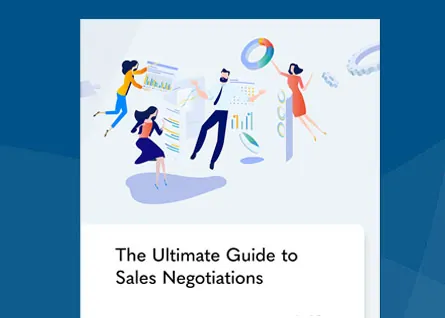Overcoming the Top 6 Client Objections

One certainty for salespeople is that, at some point, they will handle objections. With the number of decision makers continuing to rise, sellers know they will likely encounter the sticky cog in the wheel, the lone holdout to a solution, even after everyone else gets on board. In deals ranging from the transactional to the complex and at any point in the sales process, chances are someone will scrunch their face, purse their lips, or straight up shake their head. While there can be countless reasons for this, top sellers know the value of patience, understanding, and empathy when confronting these protests, and here are ways to overcome the top-six client objections:
Budget
Without question, this is the number one reason clients raise objections. No matter how great the solution, the price doesn’t fit their budget, or they wish they had known the solution before funds were allocated. Of course, sellers know this is only partly true. Budgets are projections. They are not crystal balls, forecasted to certain outcomes. Therefore, it is the seller’s job to generate demand. Part of this is understanding the client’s personal and professional needs. Budgets tend to open or stretch when buyers realize how their lives are improved by long-term, cost-effective solutions that add value, save money, and make themselves or their bosses look good.
Time
For some clients, it is never the right time to implement new solutions. How often have you heard, “If only the market wasn’t uncertain, or the Midwest storms didn’t set us back”? This can often be overcome with “What if?” questions, where sellers guide buyers to see the implications of both their actions and inaction. Like Ghosts of Christmas Past, sellers should show how the buyer’s life will be different in six months. For example, “What if you do nothing and another storm hits Davenport, your main distribution hub?” “Conversely, what if you implement our Platinum Package now and augment your other hubs with enough product to meet holiday demand?”
Competition
Another common objection stems from a competitor’s offer. After all, you are not the only game in town, and today’s clients are more knowledgeable than ever. Therefore, it is essential sellers know their competition’s offerings along with how they stack up against your own. Unless a product is so unique it stands alone and corners the market, many solutions are comparable. In this case, objections can be overcome with products that provide the greatest value. Here, sellers must know the specifications of their competitor’s offerings—how they’re made, how long they last, service and support—and contrast their own offerings to illustrate the best value.
Complications
Some clients will balk at any perceived complication. This means you must overcome the domino effect of their thinking: new solutions bring new problems, learning curves, and a loss of productivity. For these clients, lead with empathy. After all, sellers too can be creatures of habit who resist technology or new ways of doing things, such as selling virtually. For skeptical clients, schedule demonstrations and walk throughs. If you yourself are not tech savvy or an expert with this product, bring in additional support to alleviate your client’s concerns. Remember, ease of use is a critical selling point, and buyers will appreciate any effort to keep it simple.
Lacking Authority
Stop me if you heard this one. You impressed your contact and several others. They have fancy titles, like Director of This, VP of That, Senior So and So, and they are all enthusiastic about your solution. However, when it’s time to decide, none have real authority. They’ll tell you great things, like “If it were up to me…,” as their voice trails off. Of course, you should learn all decision makers during lead qualification, and it’s common for more to appear in discovery, but the best sellers check with their contacts throughout the sales process for decision makers with final authority. The sooner you can identify, engage, and impress these VIPs, the sooner you can shake hands and sign the paperwork.
Little Urgency
Sometimes, buyers don’t see the big picture. They recognize the potential of your solution, but they view it as a luxury. They don’t feel the urgency to move. Often, this stems from a value deficiency. Like patients who refuse to see a doctor unless something hurts, buyers must be prodded to act. Sellers should press the proverbial pain points to show buyers how much their inaction hurts their bottom line. Make them see the problem is not going away and may even get worse. For example, tell them, “If this was your loss in quarter three, the projected supply chain crisis could mean greater losses in quarter four.” Follow this with how their limited, up-front cost provides long-term value to both their bottom line and peace of mind.
Perhaps, if there’s a commonality in these objections, it would be fear: fear of wasting money or time, fear of inadequacy, not taking responsibility, making a mistake. This is compounded for managers and leaders whose decisions influence budgets and even staff. For sellers, understanding this can be key to success or failure. If objections derive from fear, then patience, understanding, and empathy can go a long way to overcoming them, and remind both buyers and sellers that the best defense is working with a trusted partner.

- Account Planning (11)
- Awards (45)
- Client Testimonial (37)
- Personal Branding (19)
- Podcast (12)
- Research (73)
- Sales Career Development (88)
- Sales Coaching (158)
- Sales Consulting (138)
- Sales Culture (172)
- Sales Enablement (365)
- Sales Leadership (111)
- Sales Management (255)
- Sales Negotiation (16)
- Sales Prospecting (135)
- Sales Role-Playing (19)
- Sales Training (235)
- Selling Strategies (270)
- Soft Skills (72)
- Talent Management (95)
- Trusted Advisor (27)
- Virtual Selling (51)
- Webinar (11)


























